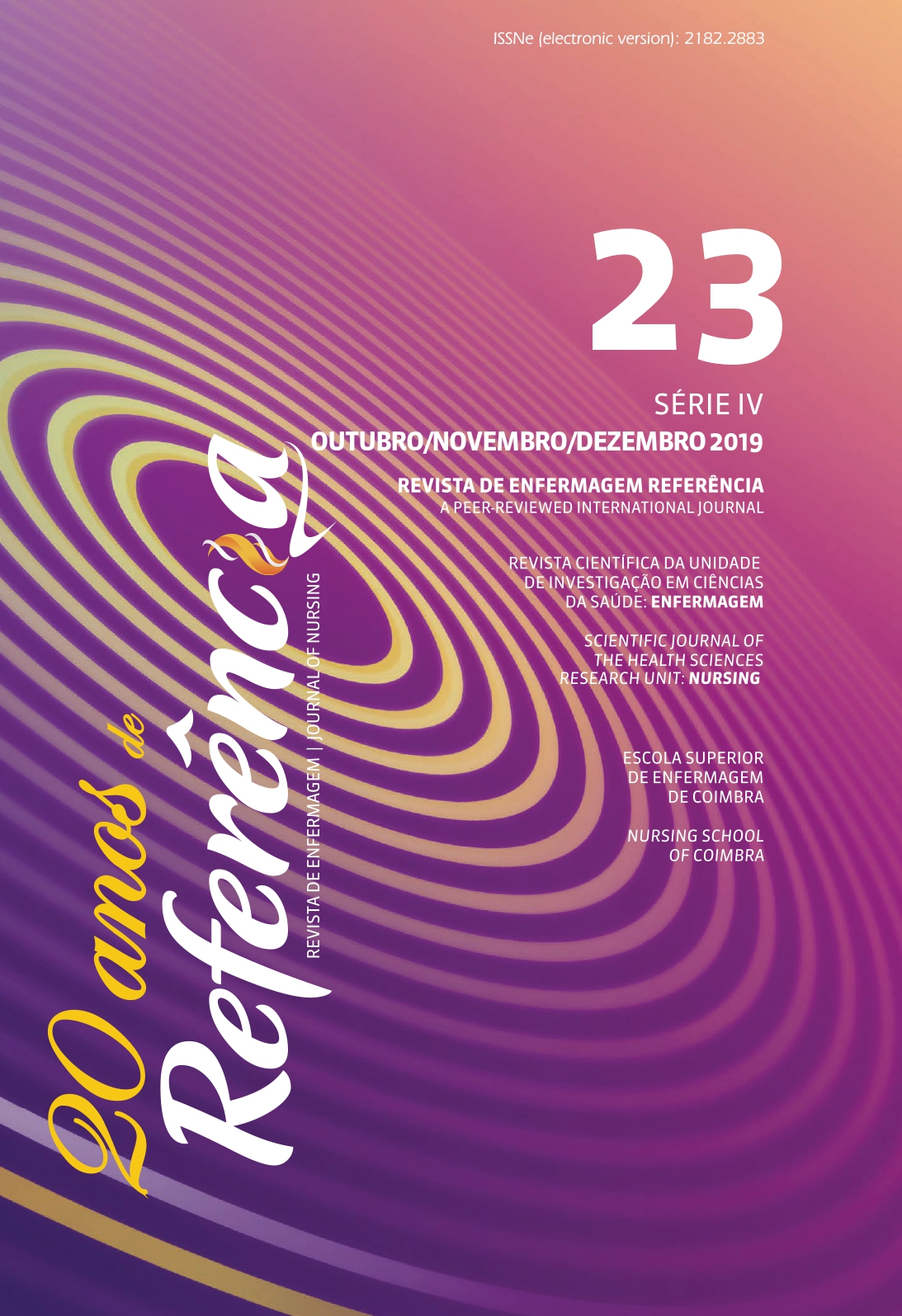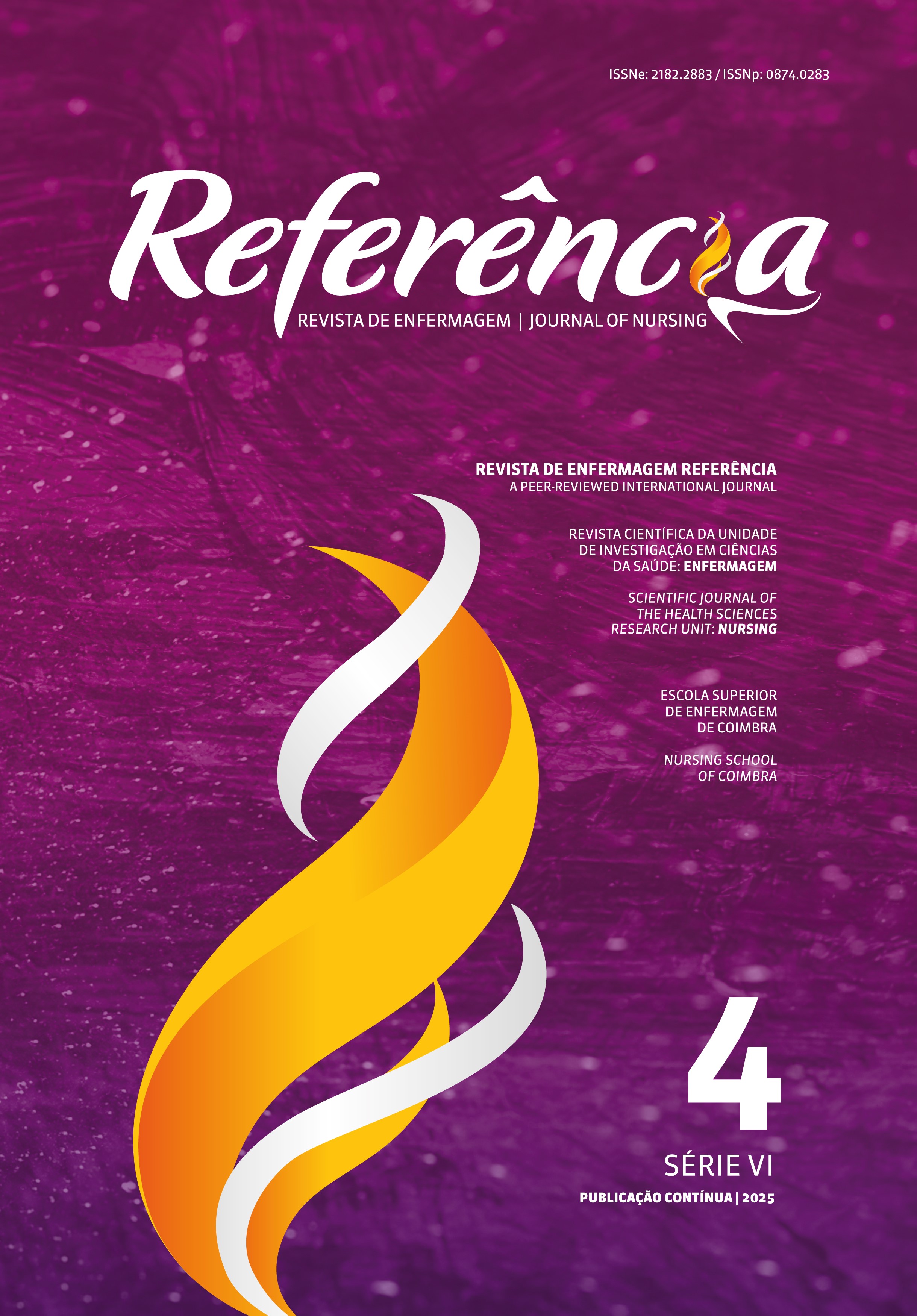Validation of urinary retention evaluation nursing protocol and nursing diagnosis in adults
DOI:
https://doi.org/10.12707/RIV19064Keywords:
nursing protocols, ultrasonography, urinary retention, evaluation and/or validation studies, nursing diagnosisAbstract
Background: In situations where the patient manifests urinary retention (UR), the physical examination is often inconclusive. Consequently, urinary catheterization is often the alternative procedure, leading to risks associated with this procedure for the patient, like urinary tract infection.
Objective: To validate the content of a nursing protocol for the evaluation and diagnosis of UR in adults, with the support of the bladder scan, for use by Portuguese nurses.
Methodology: Methodological study, with the opinion of experts through the Delphi technique and the Fehring Model, adapted to the cultural context.
Results: Validation of the protocol was achieved in the first round of the Delphi technique, with the participation of 42 experts (CVI ≥ 0.90). The second round of the Delphi technique, with 26 experts, aiming at improving the protocol, obtained a CVI ≥ 0.88.
Conclusion: The validation of this protocol represents an improvement in nursing knowledge. The instrument is considered a theoretical and practical means to support the promotion of nursing care quality.
Downloads
References
Apostolico, M., & Egry, E. (2013). Uso da internet na coleta de dados primários na pesquisa em enfermagem. Revista Brasileira de Enfermagem, 66(6), 949-55. doi: org/10.1590/S0034-71672013000600021
Balderi, T., Mistraletti, G., D’Angelo, E., & Crali, F. (2011). Incidence of postoperative urinary retention POUR) after joint arthroplasty and management using ultrasound-guided bladder catheterization. Minerva Anestesiologica, 77(11), 1050-7. Recuperado de https://www.ncbi.nlm.nih.gov/pubmed/21597444.
Buchko, B. L., Robinson, L. E., & Bell, T. (2013). Translating an evidence-based algorithm to decrease early post-operative urinary retention after urogynecologic surgery. Urologic Nursing, 33(1). 24-32. doi:10.7257/1053-816X.2013.33.1.24
Conselho Internacional de Enfermeiros. (2016). Classificação Internacional para a Prática de Enfermagem: CIPE® versão 2015. Lisboa, Portugal: Ordem dos Enfermeiros
Direção-Geral de Saúde. (2017). Programa de Prevenção e Controlo de Infeções e de Resistência aos Antimicrobianos 2017. Lisboa, Portugal: Autor. Recuperado de https://www.sns.gov.pt/wp-content/uploads/2017/12/DGS_PCIRA_V8.pdf
Egaña, M., Araya, S., Núnez, G. & Camus, M. (2014). Métodos óptimos para determinar validez de contenido. Educación Médica Superior, 28(3), 547-558. Recuperado de http://scielo.sld.cu/scielo.php?script=sci_arttext&pid=S0864-21412014000300014
Johansson, R., Malmvall, B., Andersson-Gäre, B., Larsson, B., Erlandsson, I., Sund-Levander, M., Christensson, L. (2012). Guidelines for preventing urinary retention and bladder damage during hospital care. Journal of Clinical Nursing, 22(3-4), 347-355. doi: 10.1111/j.1365-2702.2012.04229.x
Jorge, M.B. (2017). Construção e validação de protocolo de avaliação clínica para o diagnóstico de enfermagem de retenção urinária em pacientes adultos (Tese de Doutoramento). Escola de Enfermagem de Ribeirão Preto - Universidade de São Paulo, Brasil
Kim, B., Lim, J., Lee, S., Kim, J., Koh, S., Lee, I., Lee, J. (2012). The Relation between Postvoid Residual and Occurrence of Urinary Tract Infection after Stroke in Rehabilitation Unit. Annals of Rehabilitation Medicine, 36(2), 248-253. doi: 10.5535/arm.2012.36.2.248
Mendes, S. (2012). A utilização de dispositivos de avaliação do volume vesical e a prática baseada na evidência. Investigação em Enfermagem, 26, 15-21. NANDA International. (2018). Nursing diagnoses: Definitions & classification 2018-2020 (11th ed.). New York, NY: Thieme Publishers.
Nusee, Z., Ibrahim, N., Rus, R., & Ismail, H. (2014). Is portable three-dimensional ultrasound a valid technique for measurement of postpartum urinary bladder volume? Taiwanese Journal of Obstetrics & Gynecology, 53(1), 12-16. doi: 10.1016/j.tjog.2013.01.028
Pimenta, C., Pastana, I., Sichieri, K., Solha, R. & Souza, W. (2015). Guia para a Construção de Protocolos Assistenciais de Enfermagem. Recuperado de http://portal.corensp.gov.br/sites/default/files/guia%20constru%C3%A7%C3%A3o%20protocolos%2025.02.14.pdf
Rozados, H. (2015). O uso da técnica Delphi como alternativa metodológica para a área da Ciência da Informação. Em Questão, 21(3), 64-86. Recuperado de http://seer.ufrgs.br/index.php/EmQuestao/article/view/58422/36043
Seth, J., Haslam, C., & Panicker, J. (2014). Ensuring patient adherence to clean intermittent self-catheterization. Patient Preference and Adherence, 8, 191-198. doi: 10.2147/PPA.S49060
Widdall, D. A. (2015). Considerations for determining a bladder scan protocol. JARNA: the official journal of the Australasian Rehabilitation Nurses’ Association, 18(3), 22-27. Recuperado de http://web.b.ebscohost.com/ehost/pdfviewer/pdfviewer?vid=4&sid=57f316c-9-0973-4109-a288-c88d417136b0%40sessionmgr101&hid=102






















